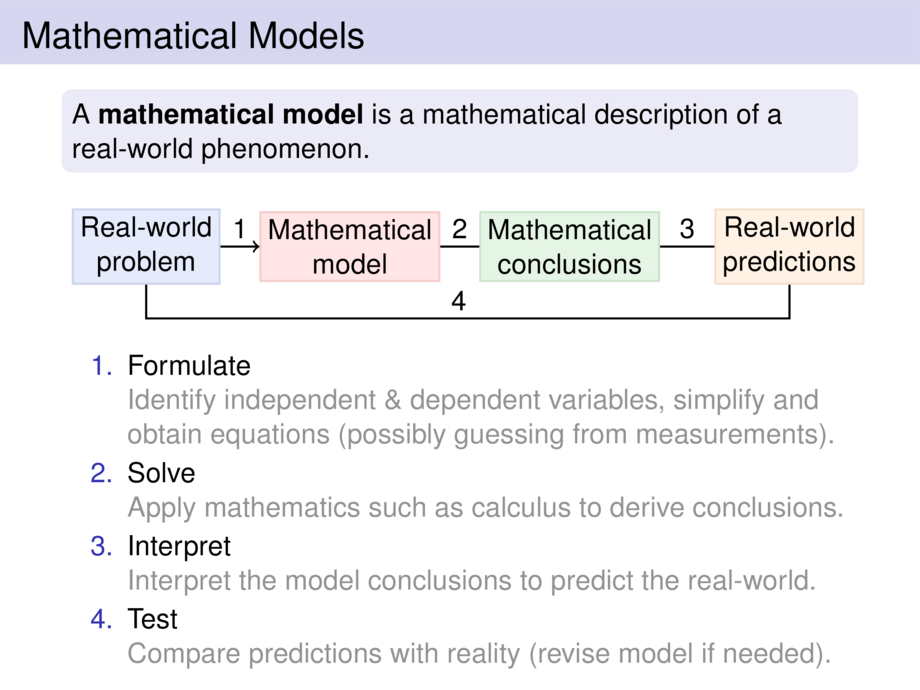



































































































7/353
\begin{frame}
\frametitle{Mathematical Models}
\begin{block}{}
A \emph{mathematical model} is a mathematical description of a real-world phenomenon.
\end{block}
\vspace{-2ex}
\pause
\begin{center}
\begin{tikzpicture}[default,inner sep=1mm]
\node[align=center,fill=cblue!10,draw=cdblue!20] (world) {Real-world\\problem};
\pause
\node[align=center,fill=cred!10,draw=cdred!20,r=world,xshift=18mm] (model) {Mathematical\\model};
\draw[thick,->] (world) -- node[pos=.5,above] {1} (model);
\pause
\node[align=center,fill=cgreen!10,draw=cdgreen!20,r=model,xshift=18mm] (conclusions) {Mathematical\\conclusions};
\draw (model) -- node[above] {2} (conclusions);
\pause
\node[align=center,fill=orange!10,draw=orange!80!black!20,r=conclusions,xshift=18mm] (predictions) {Real-world\\predictions};
\draw (conclusions) -- node[above] {3} (predictions);
\pause
\draw (predictions) |- ++(0,-1cm) -| node[above,xshift=43.5mm] {4} (world);
\end{tikzpicture}
\end{center}\vspace{-1ex}
\begin{enumerate}
\item<3-> Formulate\\
\textcolor{gray}{Identify independent \& dependent variables, simplify and obtain equations
(possibly guessing from measurements).}
\item<4-> Solve\\
\textcolor{gray}{Apply mathematics such as calculus to derive conclusions.}
\item<5-> Interpret\\
\textcolor{gray}{Interpret the model conclusions to predict the real-world.}
\item<6-> Test\\
\textcolor{gray}{Compare predictions with reality (revise model if needed).}
\end{enumerate}
\end{frame}

